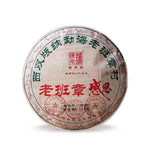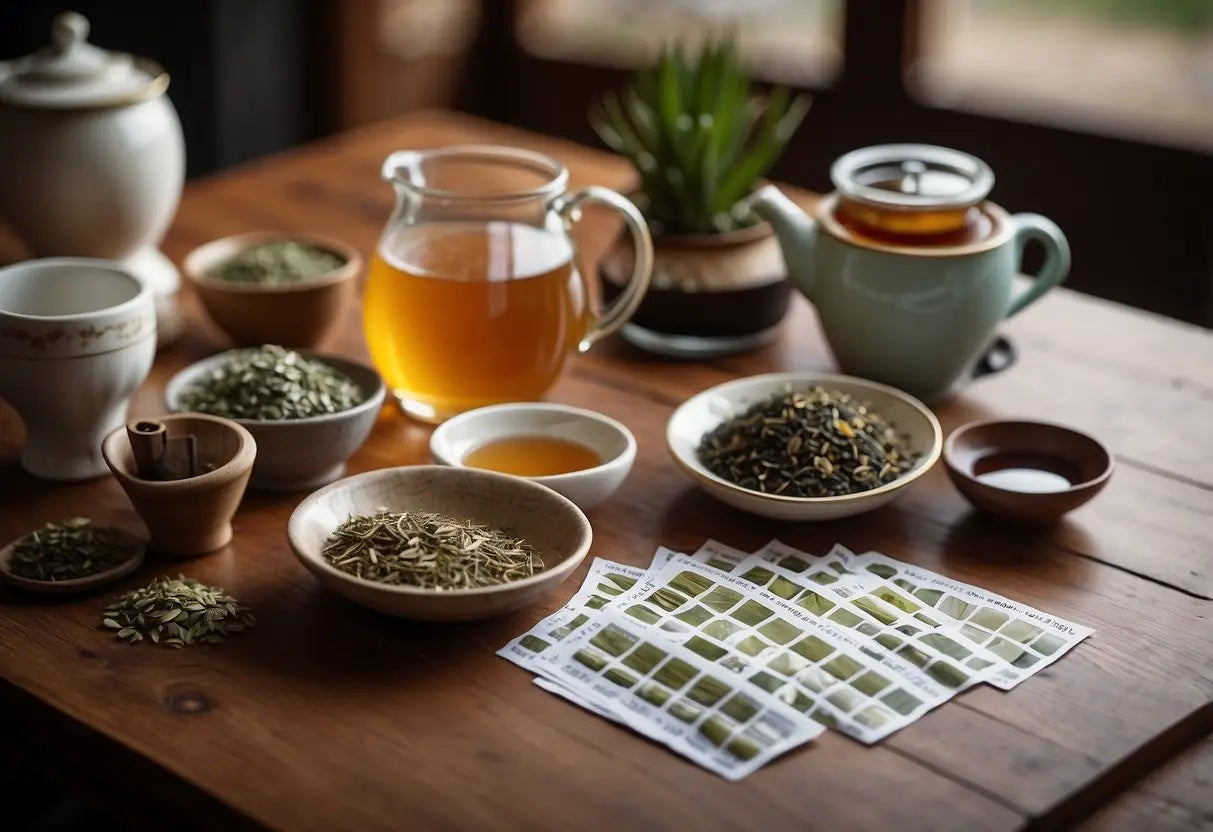Is Tea Acidic
Acidity is a key concept in understanding the nature of various substances, including beverages like tea. In this section, you will learn about the pH scale and the role of acidity in beverages.
pH Scale and Acidity
The pH scale measures how acidic or basic a substance is. It ranges from 0 to 14, with 7 being neutral. Substances with a pH less than 7 are acidic, while those above 7 are basic (alkaline).
Each pH unit represents a tenfold difference in acidity. For example, a substance with a pH of 3 is ten times more acidic than one with a pH of 4.
Bestsellers

2022 Pu-Erh Tea Sample Box (Free Shipping)

2022 Yi Pin Chen Sheng Raw Pu-erh Tea Sample Box

2022 Lao Ban Zhang Raw Pu-erh Tea

2022 Na Ka Raw Pu-erh Tea

2023 Ban Zhang Yin Xiang Raw Pu-erh Tea

2017 Rong Pu Ripe Pu-erh Tea
The pH scale is logarithmic. Acidity is measured by the concentration of hydrogen ions (H+) in a solution. More hydrogen ions indicate higher acidity.
Acidity in Beverages
Beverages often have varying levels of acidity, which can affect their taste and how they interact with the body.
Tea tends to be mildly acidic, typically with a pH between 4 and 6. Herbal teas and certain green teas may have a higher pH, making them less acidic compared to black tea.
Acidity can influence the flavor profile of tea, providing a tangy or tart taste. It can also affect dental health, as acidic beverages can erode tooth enamel over time. Knowing the acidity levels of the beverages you consume can help you make informed choices.
Tea Composition

Tea's composition varies significantly depending on the type, influencing its acidity levels and chemical makeup. Certain compounds contribute to the taste, aroma, and overall properties of the tea.
Tea Varieties and Their Acidity Levels
Different types of tea, such as black, green, white, and oolong, exhibit varying acidity levels. On average, black tea is more acidic than green and white teas. Oolong tea falls somewhere in between.
- Black Tea: Typically has a pH range of 4.9 to 5.5.
- Green Tea: Usually less acidic, with pH levels around 7 to 10.
- White Tea: Mildest in terms of acidity, with pH slightly above 7.
- Oolong Tea: Moderate acidity, with pH ranging from 5.5 to 7.
Chemical Compounds in Tea
Tea contains several key chemical compounds that impact its acidity and flavor. Catechins and flavonoids are prominent antioxidants present in high levels in green and white teas.
- Catechins: Powerful antioxidants found predominantly in green tea.
- Theaflavins: Present in black tea, contributing to its color and antioxidant properties.
- Amino Acids: L-theanine in tea affects taste and has calming properties.
- Tannins: Contribute to the astringency and slightly increase acidity.
Each variety contains a unique blend of these compounds, which affects taste and health benefits while influencing the tea’s pH.
Factors Influencing Tea Acidity
Several factors can influence the acidity of tea. Understanding these can help you make more informed choices about your tea consumption.
Type of Tea: Different types of tea, such as black, green, and herbal, have varying acidity levels. Black tea is generally more acidic than green tea.
Processing Method: The way tea leaves are processed can affect their acidity. For example, fermented teas tend to be more acidic.
Lao Ban Zhang

2024 Lao Ban Zhang Ripe Pu-erh Tea

2022 Lao Ban Zhang Raw Pu-erh Tea

2023 Ding Feng- Lao Ban Zhang Raw Pu-erh Tea (42g)

2024 Xiao Ban Zhang Raw Pu-erh Tea

2020 Lao Ban Zhang Raw Pu-erh Tea 125g

2025 Lao Ban Zhang -Gan En Raw Pu-erh Tea 357g
Brewing Time: The length of time you steep your tea can also impact its acidity. Longer brewing times typically lead to higher acidity levels.
Water Quality: The pH level of the water you use to brew your tea can influence its acidity. Soft water tends to make tea more acidic.
Additives: Adding ingredients like lemon, honey, or milk can alter the acidity of your tea. Lemon juice increases acidity, while milk can make it more neutral.
Leaf Quality: The quality and freshness of tea leaves can play a role in acidity. Fresher leaves are often less acidic.
Temperature: The temperature at which you brew your tea can influence its acidity. Higher temperatures usually result in more acidic tea.
Cultivation Conditions: The soil and climate where the tea is grown can also affect its acidity. Tea grown in more acidic soils will generally have higher acidity levels.
Effects of Tea Acidity

Tea acidity can influence your health and dental well-being. These effects vary based on many factors, including your overall diet and dental hygiene practices.
Health Implications
Tea acidity can affect your digestive system. Acidic tea may contribute to acid reflux and heartburn in some individuals. This is particularly true for those who are sensitive to acidic foods and beverages.
Herbal teas often have lower acidity compared to black or green teas. Chamomile and mint teas are good options if you want a less acidic beverage. You might also consider adding milk to tea to help neutralize some of the acid content.
Tea Acidity and Dental Health
Acidic tea can impact your dental enamel. Frequent consumption of acidic beverages can lead to the erosion of tooth enamel over time, making teeth more susceptible to cavities and decay.
Drinking tea through a straw or rinsing your mouth with water afterward can help mitigate this effect. To further protect your teeth, wait at least 30 minutes before brushing your teeth after consuming acidic drinks.
Measuring Tea Acidity
Tea acidity can be measured using both professional laboratory techniques and simple at-home testing methods. Each method provides valuable insights into the pH levels of different tea varieties.
Laboratory Techniques
Laboratory techniques for measuring tea acidity often involve precise instruments. pH meters are commonly used. These devices measure the hydrogen-ion activity in solutions, providing accurate readings of tea's pH level.
Another method includes titration. This chemical process involves adding a reactive solution to the tea until neutralization occurs. The amount of reagent used determines the tea's acidity.
Spectrophotometry can also be used. This technique measures tea's light absorption at various wavelengths to infer pH values. Each laboratory technique offers high accuracy, making them reliable for scientific research and quality control in tea production.
At-Home Testing Methods
You can test tea acidity at home using simple tools. Litmus paper is a quick and inexpensive option. Dip a strip into your tea and compare the color change to a pH scale chart. Litmus paper can provide a rough estimate of your tea's acidity.
pH testing kits are available for more precise at-home measurements. These kits usually come with a pH strip and a color chart. Soak the strip in tea and match it to the chart for a more accurate result.
Digital pH meters can also be used at home. They offer more precision than litmus paper and often come with easy-to-follow instructions. Using these methods, you can better understand the acidity of your tea, helping you choose the best variety for your preferences.
Adjusting Tea Acidity
Adjusting the acidity of tea can be achieved through different preparation methods and by adding certain ingredients. Each of these approaches impacts the tea's final pH level and flavor profile.
Preparation Methods
The way you prepare your tea significantly affects its acidity. Shorter steeping times can result in a less acidic brew. Opt for cooler water temperatures, as boiling water can extract more acidic compounds from the leaves.
Using a large volume of water relative to the amount of tea leaves can also dilute the acid content. Selecting tea types with naturally lower acidity, such as white teas or certain green teas, can make a difference.
Altering Acidity Through Additives
You can adjust tea acidity by adding ingredients that either neutralize or balance the acid. One common addition is a small amount of baking soda, which can neutralize acids.
Adding milk can also help, as it contains calcium which can reduce acidity. Lemon juice or citrus can increase acidity but provides a fresh taste. Experiment with honey or sugar to balance the flavor without significantly altering the pH.
Tea Comparisons

Comparing tea to other beverages based on acidity reveals interesting insights. Additionally, the acidity levels across different types of tea vary considerably.
Tea vs. Other Beverages
Tea, especially when compared to coffee, is generally less acidic. Coffee has a pH level around 4.85 to 5.10, while black tea tends to have a pH around 4.9 to 5.5. Green tea usually has a pH between 7 and 10, making it closer to neutral and sometimes even slightly alkaline.
Sodas and sugary drinks are highly acidic, often with pH levels around 2.5 to 3.5. This makes tea a better choice for those concerned about acidity.
Acidity in Different Tea Types
Different types of tea have distinct levels of acidity. Black tea is on the more acidic side, with a pH close to 5.
Green tea is less acidic, with a pH around 7, making it more suitable for people with acid sensitivity. Herbal teas vary widely in acidity depending on the ingredients but generally have a pH similar to green tea.
Oolong tea falls between green and black tea, with a moderate pH level. This makes it a balanced option for those looking for moderate acidity.
← Older post Newer post →
